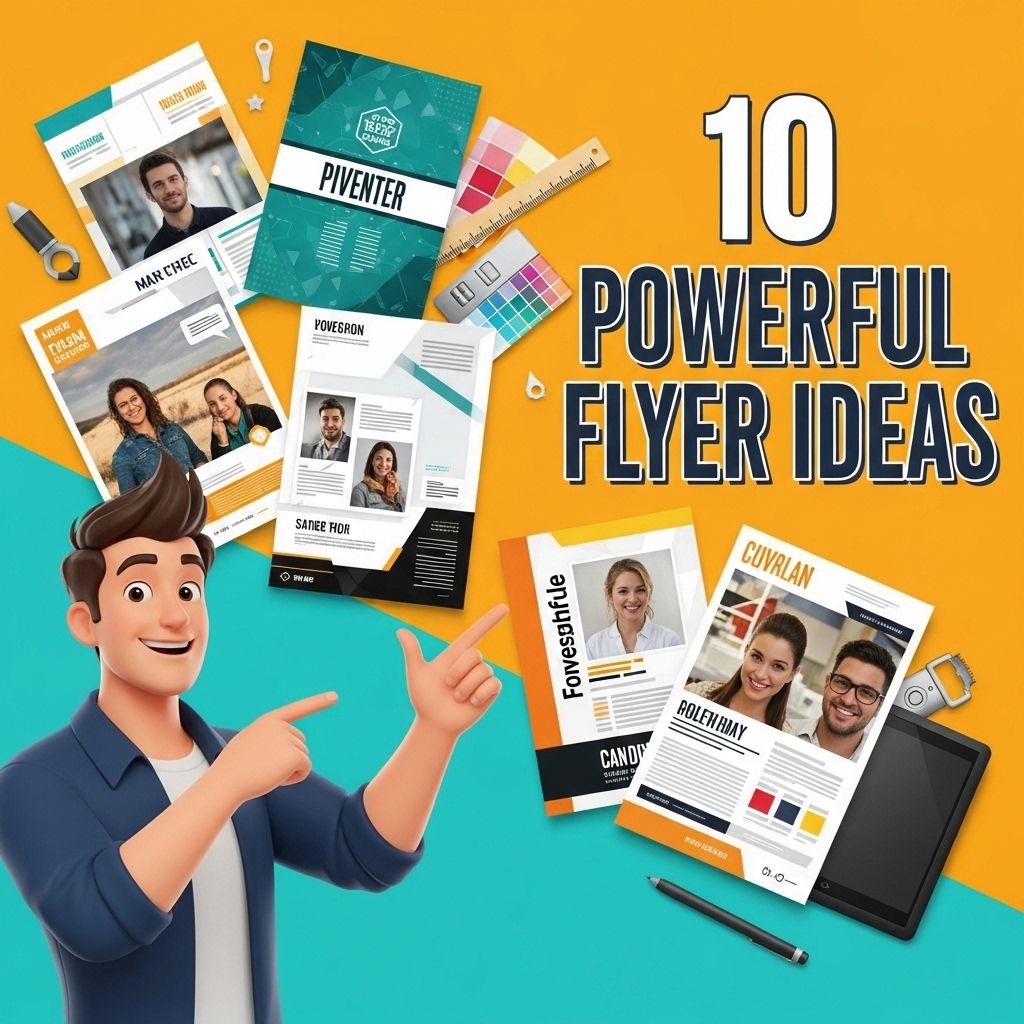In a world saturated with visual content, flyers remain a timeless tool for communication and marketing. Whether you’re promoting a local event, a new product, or a special offer, captivating flyer design can make all the difference in catching the eye of your audience. This article explores ten powerful flyer design ideas that can help you create stunning and effective promotional materials.
1. Bold Typography
Typography is one of the most powerful elements in flyer design. Bold fonts not only attract attention but also communicate your message effectively. When designing your flyer:
- Choose a font that resonates with your brand identity.
- Use contrasting font sizes to create a hierarchy of information.
- Limit the number of different fonts to maintain consistency.
Examples of Effective Typography
| Font Type | Usage |
|---|---|
| Sans-serif | Modern, clean look for tech or corporate events. |
| Serif | Classic, elegant appeal perfect for weddings or formal events. |
| Display | Creative and unique fonts for artistic events or promotions. |
2. Striking Color Schemes
Your choice of colors can evoke emotions and set the tone for your flyer. Use a striking color scheme to grab attention. Consider these tips:
- Limit your palette to three to four colors for a harmonious look.
- Utilize contrasting colors to highlight important information.
- Incorporate your brand colors to reinforce brand identity.
3. High-Quality Images
Visuals play a crucial role in attracting attention. Incorporate high-quality images that resonate with your audience:
- Use professional photographs rather than stock images.
- Optimize image size for fast loading times, especially for digital distributions.
- Ensure images have a purpose and relate directly to your message.
4. Creative Layouts
A creative layout can make your flyer stand out. Break the traditional grid by:
- Using asymmetrical designs to create interest.
- Incorporating overlapping elements for a layered look.
- Utilizing white space effectively to avoid clutter.
5. Interactive Elements
Incorporate interactive elements to engage your audience:
- QR codes that link to your website or social media.
- Interactive designs that encourage sharing on social platforms.
- Augmented reality features that provide an immersive experience.
6. Eye-Catching Headlines
Your headline is your first impression; make it count! Here are some strategies:
- Use action verbs to incite excitement.
- Pose questions to provoke curiosity.
- Be concise and to the point.
7. Clear Call-to-Action
A well-defined call-to-action (CTA) is essential in driving responses. Consider these tips:
- Use persuasive language (e.g., “Join us today!” or “Get your discount now!”).
- Make the CTA prominent through color or size.
- Position the CTA where it flows naturally within the flyer.
8. Thematic Elements
Integrating thematic elements can reinforce the overall message and tone of your flyer:
- Use patterns or textures that align with your subject matter.
- Incorporate icons or illustrations for a playful touch.
- Ensure thematic elements do not overwhelm the main message.
9. Testimonials and Reviews
Incorporating testimonials can build credibility and trust:
- Use quotes from satisfied customers.
- Highlight statistics that support your claims.
- Keep testimonials concise and relevant to the flyer’s focus.
10. Sustainability and Eco-Friendly Design
Lastly, consider adopting eco-friendly design practices. As environmental consciousness grows, so does the demand for sustainable design:
- Use recycled paper or digital formats instead of printed copies.
- Incorporate minimal ink usage through clever design choices.
- Promote your sustainable practices as part of your brand message.
Conclusion
Creating an impactful flyer requires a blend of creativity and strategy. By implementing these ten powerful design ideas, you can enhance your flyer’s effectiveness and ensure it resonates with your audience. Remember to iterate on your designs, seek feedback, and adapt to changing trends. Happy designing!
FAQ
What are the key elements of a powerful flyer design?
A powerful flyer design typically includes a compelling headline, eye-catching visuals, concise text, a clear call-to-action, and contact information.
How can I make my flyer stand out?
To make your flyer stand out, use bold colors, unique fonts, high-quality images, and an innovative layout that captures attention.
What is the ideal size for a flyer?
The ideal size for a flyer is usually 8.5 x 11 inches (A4) for easy distribution, but you can also consider smaller or larger sizes depending on your needs.
Should I use images or graphics in my flyer design?
Yes, using high-quality images or graphics can enhance your flyer’s visual appeal and help convey your message more effectively.
What is the best software for designing flyers?
Some of the best software for designing flyers includes Adobe InDesign, Canva, and Microsoft Publisher, each offering user-friendly features for different skill levels.
How can I effectively distribute my flyers?
You can effectively distribute your flyers by placing them in high-traffic areas, partnering with local businesses, using direct mail, or sharing them at events.




